Wahoo Elemnt Rival multisport watch review
Wahoo proves less is more with its first multisport watch that it says is "radically simplified" so you can concentrate on your performance rather than your equipment
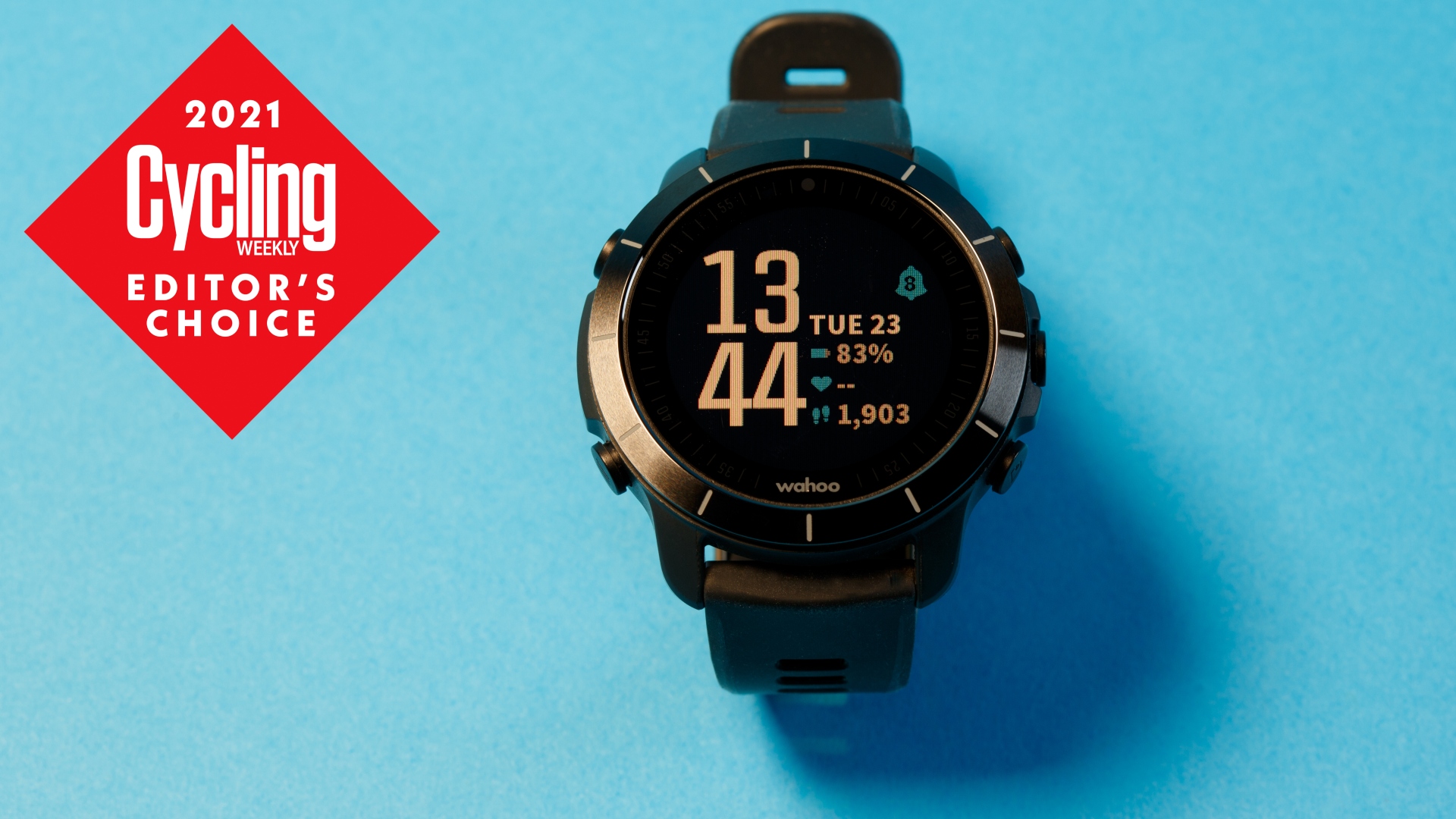
If you’re not interested in the triathlon-specific Touchless Transition feature you could argue that you're not left with as many functions as some multisport watches (although there will be future Wahoo updates), but if you want a sports-focused watch with the trademark clean design and usability of Wahoo’s cycling computers, reliable pairing and syncing, an intuitive app and exceptional battery life, the Elemnt Rival does all that.
-
+
Simple to use
-
+
Reliable pairing and syncing
-
+
Intuitive app
-
+
Accurate wrist-based HRM
-
+
Lightweight
-
-
Doesn't have fitness tracking functionality (yet)
You can trust Cycling Weekly.

The Wahoo Elemnt Rival is a GPS smartwatch that’s designed to work seamlessly with Wahoo’s bike computers in a triathlon. Its USP is a feature called Touchless Transition, whereby data automatically transfers between watch and computer leaving the user to concentrate on the race rather than pressing buttons. That feature may not interest non-triathletes, but cyclists who prefer the security of a wrist-based cycling computer for more rugged off-road riding, commuting or who run in the off-season will be very interested in the fact that the Rival shares the exact same user-friendly, intuitive functionality as Wahoo’s excellent cycling computers and uses the same app.
Not only that, but compared to other smartwatches it is lightweight and comfortable, the GPS is very accurate, battery life is incredible and the optical heart rate monitor could be the most reliable out there.
It doesn’t do navigation, sleep tracking or adaptive training guidance so you could say its functionality is limited compared to the more ‘wearable’ orientated watches, but Wahoo intends the Elemnt Rival to be a sports watch for more serious athletes who already know what they’re doing and where they're going.
Wahoo Elemnt Rival: unboxing and set-up
The box is a work of art. A triptych depicting blue sea, a cyclist on a sun-drenched road and a runner on a rugged mountain pass unfolds, accompanied by the mantra Never Lose Focus. OK, if you're not a triathlete you might be glazing over already, so let's take a look at the watch itself.
Set-up was the slickest of any smartwatch I’ve used. All the quick start guide tells you to do is to download the Wahoo Elemnt app to your phone, scan the QR code that appears on the watch face when you power it up and follow the instructions. I had no pairing issues at all.
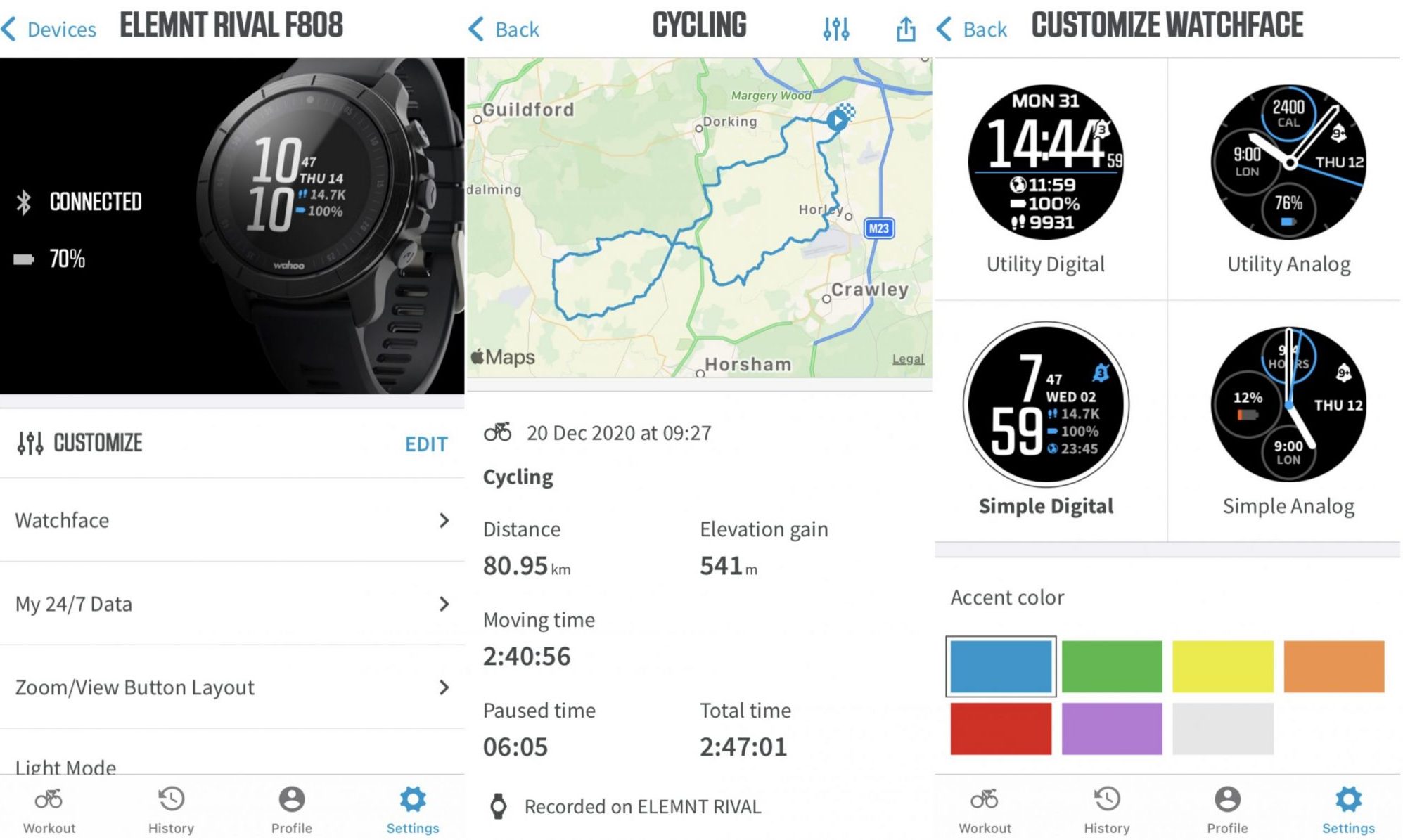
You can customise pretty much everything with the app, from the watch face display (there are four to choose from) and accent colour, to button function and sports profiles.
Overall, pairing and syncing have been flawless. It happens in the background: once you’ve finished an activity it’s automatically uploaded to the Elemnt app and Strava or other third-party app, and the kudos is rolling in almost before you've come to a standstill. I have not once had to manually re-pair it with my phone.
While it’s paired it will also receive certain smartphone notifications which can also be customised or switched off as required.
The Rival will pair with Bluetooth and ANT+ sensors such as a chest strap and a power meter. Again, no issues at all. In fact it paired automatically with a Polar H10 chest strap that I wanted to keep separate for comparison.
Construction
At 46.5x46.5x15.3mm the Rival is ‘intermediate' in smartwatch sizing. The biggest Garmin Fenix 6 Solar comes with a 51mm case while the smaller Fenix 6 measures 42mm. Wahoo offers just one size but I found it exactly right for a wrist diameter of 165mm (Wahoo says it fits 140mm to 240mm). The silicone strap has plenty of flex and is not too stiff. This is not only important for comfort but it also ensures the optical heart rate monitor on the back of the watch can be optimally and securely positioned. I was also pleased to see plenty of closely-spaced holes in the strap, which facilitated a perfect fit.
Something else that helps the HRM function at its best is the weight of the watch. I found the 66g Suunto 5 slid around on my wrist even with the strap cranked up, but its lighter 53g weight helps the Wahoo stay in place.
The screen – which is not a touchscreen – is made from chemically strengthened Gorilla Glass. That and the ceramic bezel have stayed impressively scuff-free in the two months I’ve been using the watch.
There are five buttons and it’s very easy to work out which does what even without the set-up guide. The only function you wouldn't guess – and which is actually a very useful one – is the Perfect View Zoom. Like Wahoo’s cycling computers you can increase or reduce the number of data fields you’re viewing. With the Rival this is done by pressing bottom left and bottom right together. When setting the watch up in the app, you select and rank your data fields so that when you’re zooming in you can narrow it down to your single favourite field – power, speed, heart rate, whatever you decide in advance.
What can it do?
Wahoo calls the Elemnt Rival a “radically simplified multisport watch that delivers a seamless advantage.” The Touchless Transition is certainly its headline feature and it's clever stuff, but beyond that is, as Wahoo says, a relatively pared-back computer.
While there’s step counting and calorie burn, there’s no sleep tracking, floors climbed, adaptive training guidance, Spotify or Garmin Pay-style contactless payment. There isn’t even navigation.
Is there enough left? I would say yes. Leaving all these extras out is a bold but a good call: Wahoo has separated wearable Apple Watch-type features – some of which never get used yet still add complexity – from serious sports data. I would suggest anyone who buys a sports watch at this price wants it for the undiluted sports.
So with its focus on sport, Wahoo has designed in plenty of customisability so you can get the look and feel of your sports profiles and your data fields exactly how you like them.
You can edit your sports, create new profiles and for purposes of the zoom function, rank six data fields from least to most important. ‘Triathlon’ is the one that operates Touchless Transition. For ‘Cycling’ it behaves just like a Wahoo cycling computer and tracks all the metrics you’d expect. The same with 'Running'.
June 2021 update.
Since our original review Wahoo has added quite a few updates, as we were promised they would. The most obvious ones are Smart Notifications from WhatsApp, Signal and Telegram (alongside calls, texts and emails); iOS Music Control; Planned Workouts, which includes TrainingPeaks integration, and Broadcast Heart Rate, which allows the Elemnt Rival to be used as a heart rate monitor with other GPS devices such as the Wahoo Elemnt Bolt and Roam.
Here's a list of the highlights:
Track running
The track running profile provides distance and pace metrics when running on a 400m track. Pressing the lap button during a track session will snap intervals to the nearest 100m.
iOS music control
Control music on iOS devices from the Elemnt Rival. Play, skip, pause, and adjust the volume when a device is paired, but out of reach.
Planned workouts
Perform planned workouts directly on the Rival. This feature includes TrainingPeaks integration as well as 12 pre-built Wahoo Sports Science workouts. The week's workouts automatically sync to the Rival. It will prompt you at the start of each interval to stay on target.
Kickr Headwind control
The Elemnt Rival can now control the Kickr Headwind smart fan in three modes: heart rate response, speed simulation, and low-med-hi settings.
Smart notifications
iOS users can receive smart notifications from WhatsApp, Signal and Telegram alongside calls, texts and emails straight to the watch.
Broadcast heart rate
Broadcast heart rate captured from the Elemnt Rival's built-in optical heart rate sensor to other GPS devices via ANT+.
Pace chart
View the pace of all your previous splits in an easy-to-see chart format
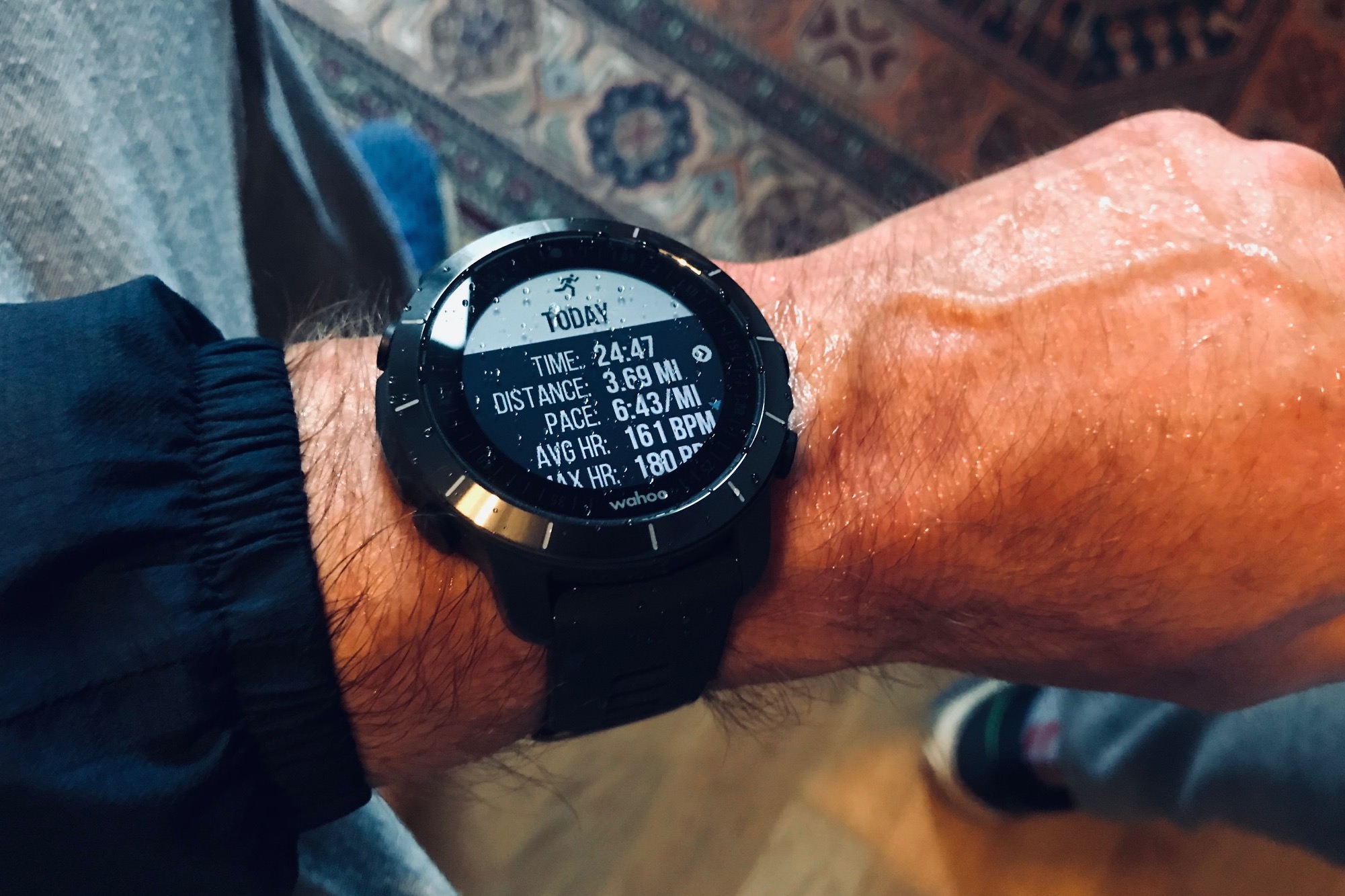
Naturally it's waterproof to 50 metres since it's also designed for swimming.
GPS
The Wahoo Elemnt Rival supports GPS and GLONASS and is as accurate as any. There is the occasional drift onto the verge by a couple of feet but it’s never any more than that.
The Rival finds a signal very quickly – happily within a few seconds of standing outside the front door.
Heart rate monitor
Optical heart rate monitors work by shining an LED into the wrist and measuring blood flow – and they are notoriously inaccurate. However, I’d say the Rival is probably accurate 95 per cent of the time. The other 5 per cent is when it drops out for no apparent reason, but that’s better than any other wrist-based HRM I’ve used. I can go entire rides or runs without it dropping out, but it’s nevertheless frustrating when it happens, mostly because it’s likely to skew training stress in your third-party training app. Even though the Rival is very good, you’ll need to use the chest strap if you want 100 per cent heart rate accuracy.
It’s worth pointing out that there are many variables that can affect optical HRM accuracy including size and shape of wrist, but for me the Rival was the best I’ve used.
Battery life
This one will run and run. Even with 24/7 heart rate enabled and exercising most days, I easily get a week-plus out of it. Wahoo claims 14 days in smartwatch mode, that's probably without the HRM on.
It clips into a sort of charging pad, which is slightly plasticky but works well and charges the Rival quickly and efficiently.
The ride (or run)
What’s it like during an activity? The Elemnt Rival screen is super easy to read on the move and the digits are clear. It beats the Suunto 5 by miles for this. Even with the maximum six data fields you don’t have to squint. I’d give it another ‘best I’ve tested’ for screen clarity and legibility. I had no problem using all six data fields for both running and cycling. Helpfully, the digits themselves expand once the activity is in progress, with the titles of the data fields (mph, watts, HR etc) disappearing to make extra space once you know what's what, which is clever.
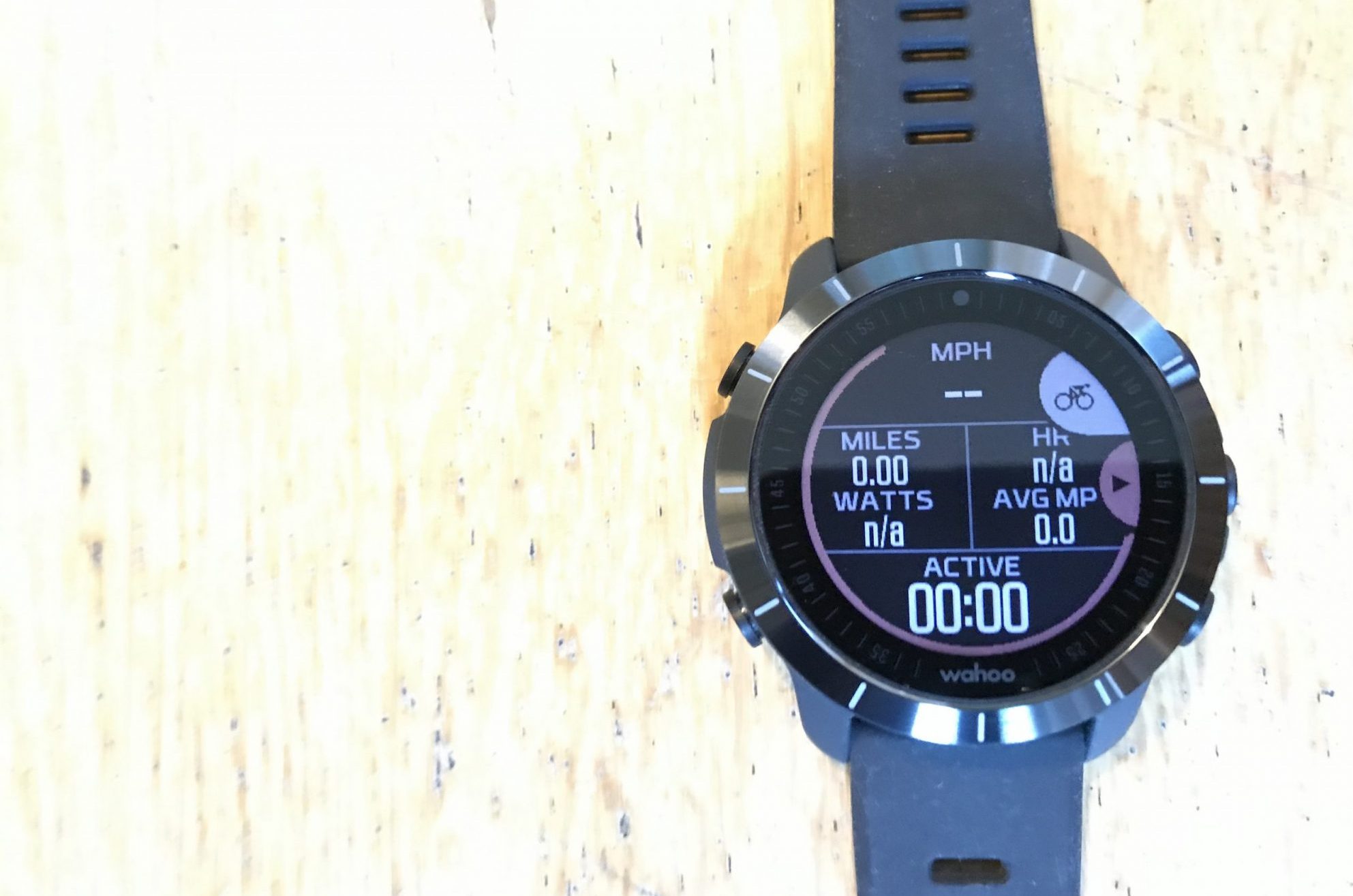
Using the buttons is also simple when riding or running. They protrude enough to use with a winter-gloved finger and a loud bleep and vibration lets you know that you’ve hit one successfully.
I won’t go into aesthetics because you can see what it looks like and make up your own mind. Personally I think Wahoo has got it right. It does a bit of rugged and a bit of chic and a bit of high tech and is all quite understated so you could wear it any time. It’s also available in a slightly louder ‘Kona White’ (this one is ‘Stealth Grey’).
Value
The Wahoo Elemnt doesn't have a direct competitor from Garmin at this price point: the Garmin Forerunner 745 has a SRP of £449 and for that extra £100 you get all the wearable functionality that the Wahoo Elemnt leaves out, including fitness tracking and training guidance. We reviewed the older Garmin Forerunner 945 which was £439.99 at the time (still available on sale from some retailers for under £400) and has a similar level of functionality to the 745, and said it "might be overkill for some".
The Suunto 5 undercuts the Rival at £299 and has more functions but, reviewing that for another publication, I found it wasn't as intuitive as the Wahoo Elemnt Rival and the optical HRM was unreliable. We haven't tested the Polar Grit X, which costs slightly more at £379.99.
The Elemnt Rival is more expensive than both of Wahoo's cycling computers, but if you're a cyclist who likes to do other endurance sports and are already a Wahoo convert, I would say it's worth the outlay.

Thank you for reading 20 articles this month* Join now for unlimited access
Enjoy your first month for just £1 / $1 / €1
*Read 5 free articles per month without a subscription

Join now for unlimited access
Try first month for just £1 / $1 / €1
Get The Leadout Newsletter
The latest race content, interviews, features, reviews and expert buying guides, direct to your inbox!
Simon Smythe is a hugely experienced cycling tech writer, who has been writing for Cycling Weekly since 2003. Until recently he was our senior tech writer. In his cycling career Simon has mostly focused on time trialling with a national medal, a few open wins and his club's 30-mile record in his palmares. These days he spends most of his time testing road bikes, or on a tandem doing the school run with his younger son.
-
 'This race is absolutely disgusting': Peloton reacts to another brutal Paris-Roubaix Femmes
'This race is absolutely disgusting': Peloton reacts to another brutal Paris-Roubaix FemmesNow in its fifth edition, Paris-Roubaix Femmes is still a tough race, even for the best bike riders in the world
By Adam Becket Published
-
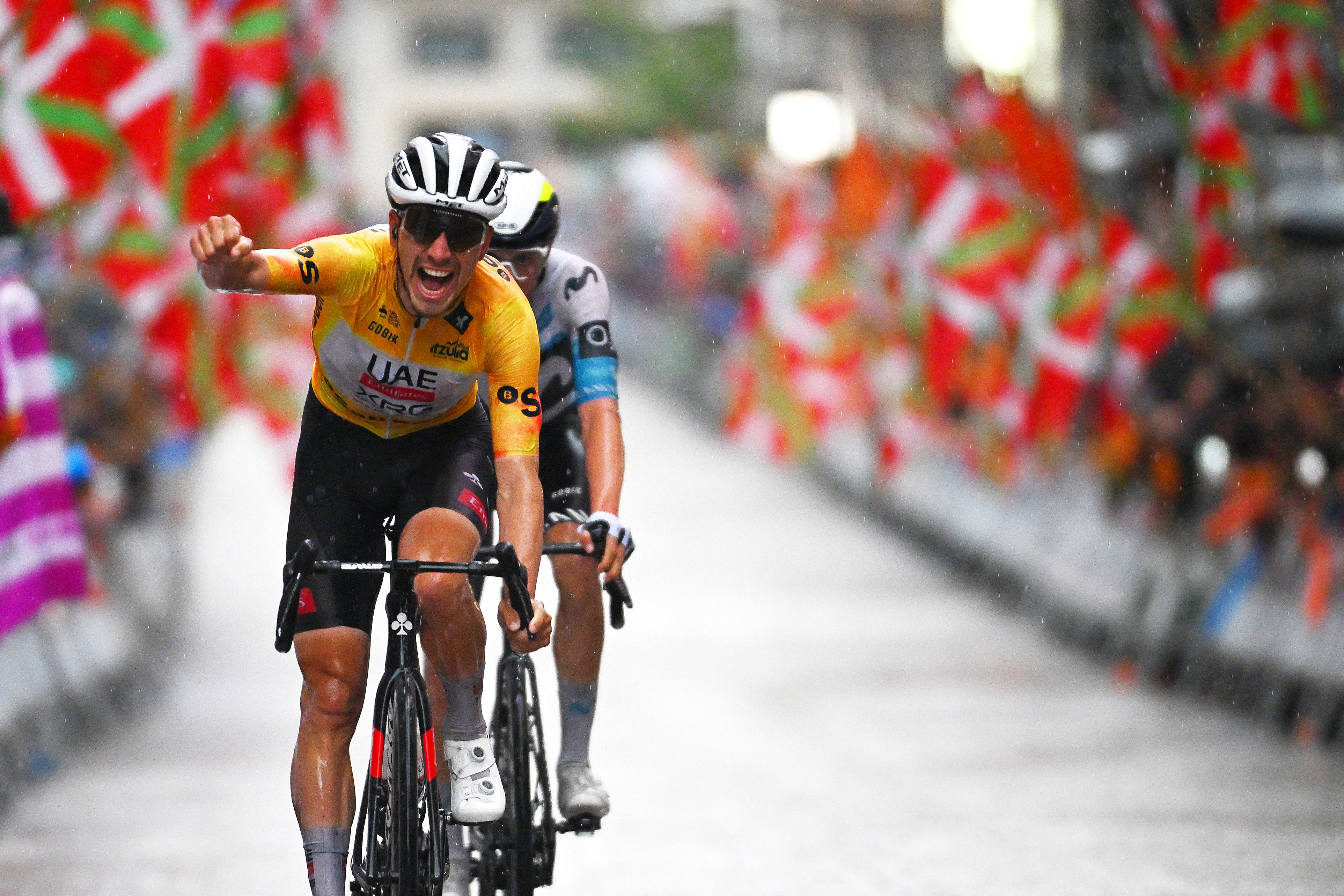 ‘It’s the biggest win of my career’ says João Almeida after crushing Itzulia Basque Country success
‘It’s the biggest win of my career’ says João Almeida after crushing Itzulia Basque Country successUAE rider wins the final stage to finish almost two minutes clear of Enric Mas on GC, with Max Schachmann in third
By Peter Cossins Published
-
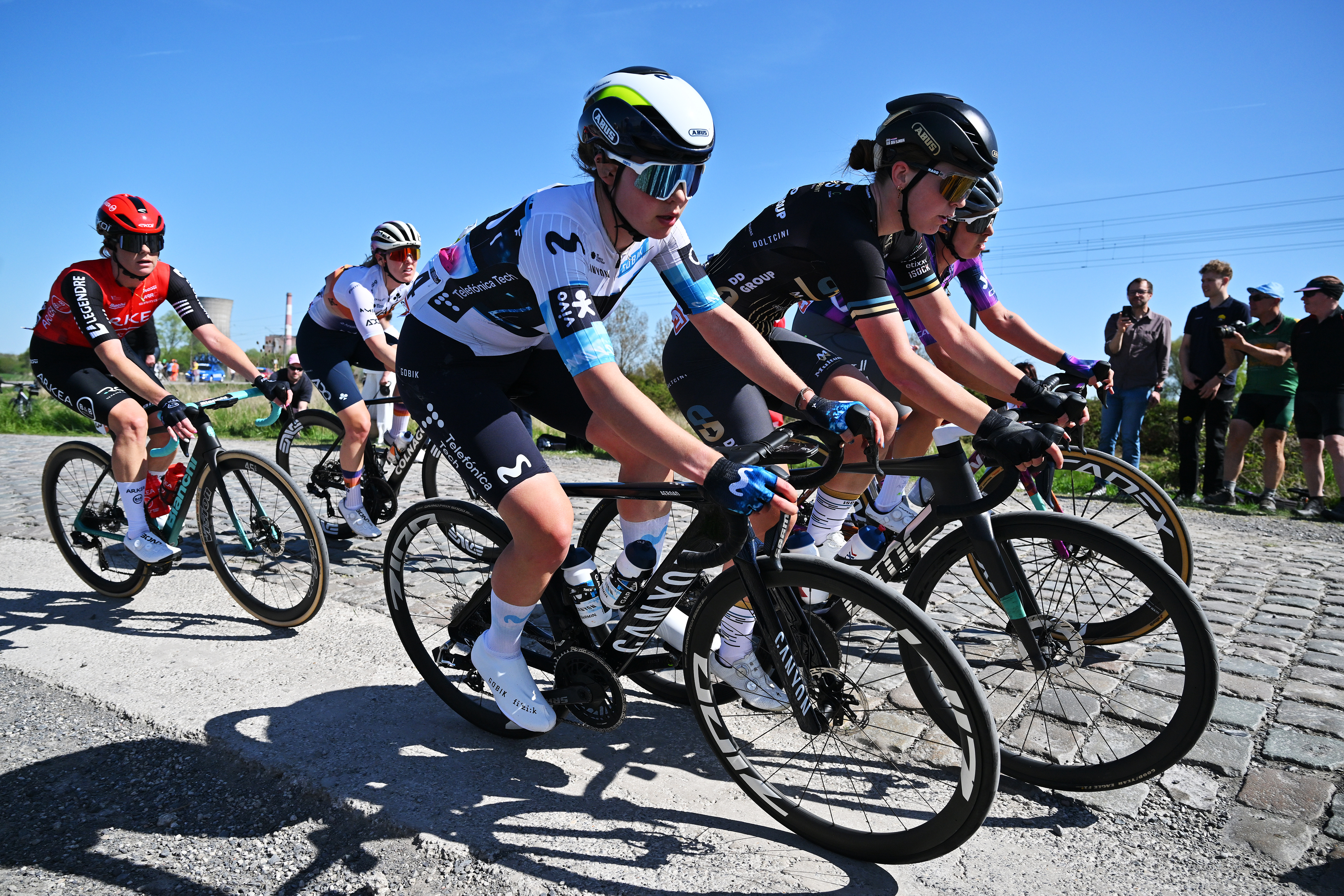 'I have an exam in a month and a half' - Carys Lloyd becomes Paris-Roubaix's youngest ever rider
'I have an exam in a month and a half' - Carys Lloyd becomes Paris-Roubaix's youngest ever riderBritish teenager and A-Level student makes it to the velodrome on debut
By Tom Davidson Published